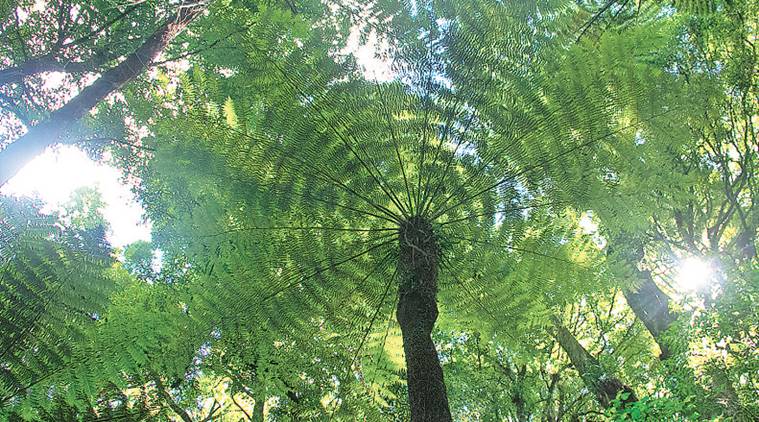 In The Shade: Silver fern trees at Sanctuary Mountain, New Zealand. (Photo: Supriya Sehgal)
In The Shade: Silver fern trees at Sanctuary Mountain, New Zealand. (Photo: Supriya Sehgal)
Given the profusion of the word ‘Kiwi’ in every imaginable communication in New Zealand — headlining sports teams, milk brands to timber companies — one would think that the bird is a ubiquitous feature of the land. On the contrary, the national bird’s population has been in jeopardy over the last few decades. On the spectrum of “endangered” to “vulnerable”, it has urged a desperate need for conservation. “There were millions, now we have only a couple of thousands,” says Romy, as he drives me to Sanctuary Mountain from Auckland. Ours is the only car heading towards Parawera from Hamilton (57 km from Sanctuary Mountain and 165 km from Auckland). Others turn towards the more popular pin on the North Island travel map — Hobbiton Movie Set.
At Sanctuary Mountain we meet our guide Daniel. The place looks oddly stripped off visitors, even though this is the world’s largest pest-proof fenced conservation project. Our group of eight is eager to learn more about delicate ecosystems or unvisited areas in a new country. Initiating us into New Zealand’s flora and fauna, Daniel steers us to a board listing cute hedgehogs, seemingly innocent possums, harmless-looking rats, stoats and hungry feral cats. Long before the arrival of humans, the New Zealand islands had no predators at all. It were the Maoris (first Polynesian settlers) who brought rat and dogs, followed by Europeans with an arc-full of non-native mammals that wreaked havoc on the original ecosystem.
Daniel leads our pack with a Pied Piper-esque charm. Walking beneath the silver fern trees, we realise it isn’t just the Kiwis that need a watch, the native trees, fungi, shrubs, birds and insects, too, are up against an army of uninvited mammals — deer, goats, pigs and rabbits and more being added to the list of usual suspects.
While the chance for a return to the original native wildlife was bleak for New Zealand, the Sanctuary Mountain project had the foresight to start conservation work more than 100 years ago, in Maungatautari. Over the years, the project has been able to protect 3,400 acres of ancient forest within the protective embrace of a 47 km fence. By building mammal-proof fences, it essentially toppled conservation on its head by containing, rather than letting the protected animal and bird species loose. This non-traditional method has worked wonders, as a mature forest of conifers, broad-leaf trees and podocarps thrives and homes birds, insects, frogs and reptiles.
It’s been two hours of us walking. My head has been mostly hung back trying to spot Kaka and Tieke birds in the thick canopy of ancient trees, as Kiwis are nocturnal and, hence, impossible to spot during the day. There are about 200 of them in the large forested sprawl. At present, the national decline in Kiwis is about 2 per cent. Sanctuary Mountain hopes to help the department of conservation to match the increase to 2 per cent. A small brown bird with a yellow chest at the foot of a Rimu tree brings my gaze back to the ground level. The Hihi is so accustomed to non-predators, that it’s happy to come looking for insects if you just move the dirt by your feet.
As we leave, Daniel says, “If all efforts go well, New Zealand will be predator-free by 2025.” I desperately hope Daniel’s words come true.